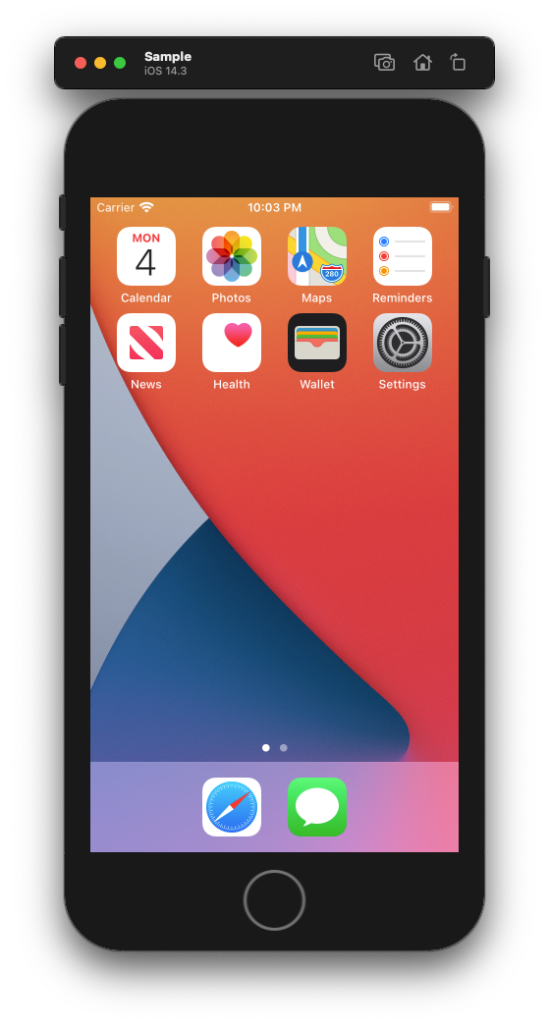What is an iOS App Simulator?
iOS app simulator replicates applications that run on an iOS device. These tools allow you to start and run iOS apps without an iPhone or iPad—accessing the app from your web browser, Mac, or Windows computer instead.

iOS Simulator, which ships as part of Xcode, is a tool for developing and prototyping your mobile app. While the iOS Simulator can be used to test your app’s basic behaviour, it is severely limited as a testing platform.
The terms “simulator” and “emulator” are often used in the same context. But these tools are not interchangeable.
Simulators create an environment that replicates the configurations and behavior of a real device. Emulators duplicate the software and hardware features of the real device. While simulators mimic the basic behavior of a virtual environment, they don’t actually follow all the rules of that particular environment.
Some iOS app simulators double as emulators, or vice versa. But this is not always the case.
How Does Xcode Work With Testing an iOS App?
- Xcode is Apple’s official IDE (integrated development environment) for building, testing, and debugging iOS applications. As an iOS developer using native development, you can use the iOS simulator in Xcode to test your app without using a third-party tool.
- This simulator is easily accessible from your Xcode project.
- We have a more in-depth guide on how to test your iPhone app using Xcode. But here’s a quick summary of those steps:
- Open your Xcode project.
- Navigate to the run destination menu in the toolbar.
- Select how you’re going to test the app (iOS simulator or real device).
- If you want to test using a real iOS device, that device must be plugged into a computer that’s running Xcode.
- If you’re testing using the built-in simulator, simply select the simulators of a device family (iPhone X, iPhone SE, iPhone 8, iPhone 8 Plus, etc.).
- Xcode will automatically flag any errors and bugs during the simulation.
- Xcode is great for running simulations if you’re already developing an app within that IDE. Otherwise, it doesn’t really make sense to use it for this purpose.
- What Are The Advantages of Using an iOS App Simulator?
There are several benefits to using iOS app simulators.
key advantages:
- You can use iOS app simulators for debugging and testing.
- Simulators run fast since they only mirror the software, as opposed to running the full software.
- Simulators make it easy to spot errors and issues within your code.
- You run apps built for iPhones and iPads without an actual iOS device.
- Many iOS simulators are free and open source.
- Simulators can be connected to an IDE during the early development stages.
- Most developers and testers don’t have access to every single iOS device with different screen sizes, resolutions, and older iOS versions.
- Some simulators work for iOS and Android apps without needing to plug in any hardware.
The Disadvantages:
While using a simulated device to test and run a mobile app can be useful, it’s not always perfect. Here are some potential drawbacks to consider as you’re going through this process.
- You can’t replicate the actual conditions of a real device, like battery consumption, restricted memory, etc.
- Simulators don’t take into consideration the full experience of using a physical iOS device, including the visual experience and app speed.
- Results from different simulators might vary, and the speed is typically unrealistic due to low graphic load times that don’t function the same as a working app.
- You can’t accurately replicate certain functions like push notifications or SMS messaging from the app using a simulator.
- App simulations may run differently than how it would normally run in a natural environment on a real device.
- You can’t access native features like an iPhone camera or natural gestures (scroll, zoom, tap, pinch and zoom, etc.).
Conclusion
iOS simulators are really versatile. They’re mostly used for testing iOS apps, tvOS apps, and watchOS apps without actually running the app on a real device.